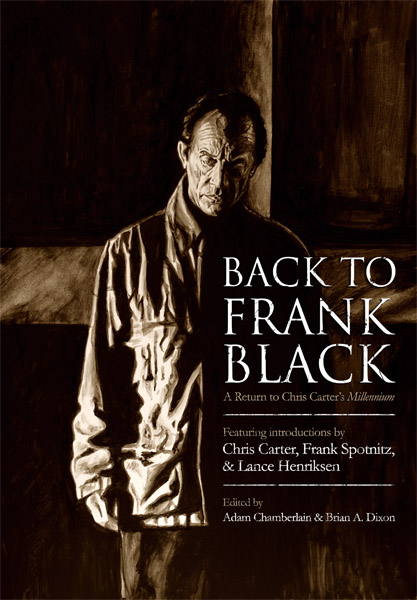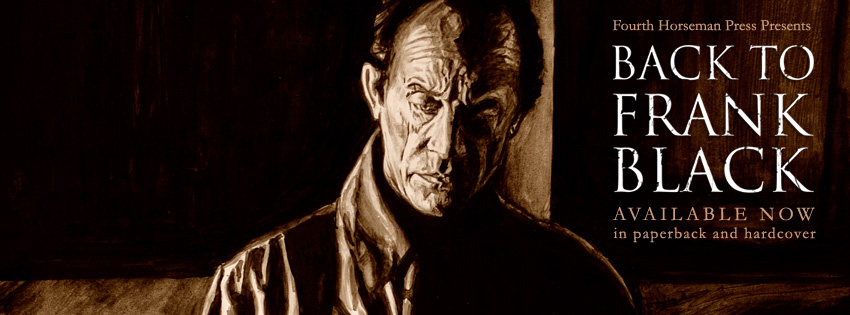Written By: Dan Geer
Back in 1993, Chris Carter was a new name to the television business when he delivered the pilot episode for The X-Files, a science-fiction series that raised the stakes for what could be done with fictional storytelling on TV, and gradually became one of the Fox network’s biggest hits. By the time the show’s third season rolled around, it was clear to Fox that Chris Carter had practically become a household name, and that any new series with his name on it could potentially give the network its next groundbreaking success. In light of this revelation, Fox decided to give Carter another crack at developing something entirely new for the network that might captivate audiences just as much, if not more than The X-Files. Millennium was Carter’s bold response to that challenging proposition.
The show did indeed offer something new, stepping away from the likes of aliens and monsters to tell the story of one man, former FBI agent Frank Black (Lance Henriksen), and his undying quest to protect his family from the evils of this world. For Black, this meant coming out of retirement to join a consortium called “The Millennium Group,” through which he would act merely as a consultant to the FBI, putting his skills to use as a freelance forensic profiler. His talent consisted of the unique ability to uncannily “see what the killer sees” in order to solve horrific crimes – not through psychic ability, but rather with incredible intuition. Through this amazing gift, he would start to connect the dots between the grisly serial killings he investigates, and the Millennium Group’s mysterious and incredibly focused interest in end times prophecy. Needless to say, the premise was quite daring, and risky for Fox to stake its reputation on considering the series’ dark subject matter.
While the series did end up giving Fox exceptional ratings throughout its three seasons, somehow the decision was made to cancel it in pursuit of other show ideas for the network, despite its massive following. At the end of its final season in 1999, Millennium saw Frank Black drive off into the sunset toward a future that, unfortunately, has never seen the light of day. Thus, in a valiant attempt to catch the attention of Fox, and anyone else who will listen, the Back to Frank Black campaign was formed in 2008 in order to persuade the powers that be that Frank Black’s story deserves a proper conclusion by way of a theatrical film release or television event.
While the campaign has had numerous accomplishments over the last four years that have breathed new life into the Millennium fanbase and the cause to continue the story of Frank Black, those behind its successful progression may have just topped themselves with their recently-released 500+ page companion book to the series. Released by Fourth Horseman Press in the fall of 2012, Back to Frank Black: A Return to Chris Carter’s Millennium brings together various well-respected authors, along with select members of Millennium‘s cast and crew (including Chris Carter, Lance Henriksen, and producer Frank Spotnitz), to collectively make the case that, after all these years, we may just need the character of Frank Black to resurface and face the horrible realities of a post-millennial world along with the rest of us.
This in-depth Milliennium compendium can be looked at as being divided into two distinct categories: Essays and interviews. The essays in particular really get into great detail with every subject they tackle, many times taking 30-40 pages to properly analyze a topic. While this can sometimes seem tedious, they all effectively let the reader know just how brilliant the series really was. For instance, the show’s emphasis on the nature of evil and its connection to late 1990s culture is explored at great length here, over the course of two long chapters written by different authors, as a matter of fact. These two chapters, titled Seeing Evil and Evil Has Many Faces, address whether the series was suggesting that evil merely comes from within human beings, or some evil spiritual presence capable of driving the most innocent of persons to commit unspeakable, inhuman atrocities. It is a theme that was constantly being tackled throughout the course of the series, and one that requires ample length to examine adequately. Television viewers would be hard-pressed to find anything as deep or meaningful in similar shows like the various incarnations of CSI.
The essays consist of all sorts of interesting, well-written topics, covering just about every theme explored in Millennium. Subjects such as Frank Black’s gift of second sight (is he psychic or not?), animal symbolism in the series, and even the use of popular music on the show are thoroughly investigated, offering immense and intriguing insight into the various storytelling devices used in the series to not only further develop its rich characters and mythology, but also tug at the emotions of the viewer. There is such a wealth of thematic material explored here that readers will find it very difficult to stumble upon an essay they don’t enjoy, and will mostly come out of it in the end with at least one or two favorites. Personally, one of the most compelling chapters in the book to read was Gordon Roberts’ This is Who We Are: Secret Society and Family Redefined, which examines how the character of Frank Black deals with being torn between two distinctly different family groups: His traditional, “nuclear family,” consisting of his wife and daughter, and his “mafia family,” The Millennium Group. It is simply one of the most interesting components the series has to offer, and this chapter delves into the subject superbly.
The cast and crew interviews spread throughout the book are also just as enlightening and entertaining, but in a completely different way of course. Conducted by James McLean and Troy Forman, champions of the Back to Frank Black campaign, these interviews take the reader on a wonderful behind-the-scenes journey with various creative people responsible for bringing Millennium to life, and even provide interesting bits of trivia to boot. People may be surprised to learn, for example, that Millennium music composer Mark Snow was once a part of a band in the 60s that big-time record mogul Ahmet Ertegün proclaimed would be bigger than The Beatles, or that writers Kay Reindl and Glen Morgan got into a bit of a feud on an AOL message board about one of Morgan’s story ideas – an incident which actually lead to Reindl getting a job on the series. One of the most shocking bits in the book for me to read was in the segment with Jordan Black actress Brittany Tiplady, in which TV Guide twisted her words in an interview she gave at just five years old, falsely conveying that the show’s grim themes were giving her nightmares.
Back to Frank Black seriously delivers some of the most enjoyable and insightful stories behind the making of a series that this reviewer has ever had the pleasure of reading, right down to amusing accounts from writers dealing with network censors, realizing Frank Black’s second sight on screen, and shifts in direction for the series throughout its run. The interviews really have a down-to-earth quality about them that people will not find anywhere else, which is very refreshing, and makes it quite difficult to put the book down. One will want to meet and chat with each and every one of these creative people after reading these interviews.
Even though the book is quite lengthy and best serves the campaign when read as a whole, Back to Frank Black is still approachable to those who prefer lighter reading (like myself), since each chapter stands on its own. One can read a chapter here and there, forget about the book for a while, and pick it back up whenever the desire presents itself to dive into the series more. The essays and interviews are evenly distributed throughout, which keeps it fresh every time one gets further into it. It also contains an episode guide at the end, each with a brief summary for reference, which comes in quite handy when certain episodes are sighted by the writers of the book. The only questionable decision in regard to its layout may be the placement of James McLean’s Hard Graft chapter toward the end of the book rather than at the beginning. While McLean may not be an award-winning author like the book’s John Kenneth Muir, it is nevertheless a great read, and sets up the entire reason this book came into being in the first place.
Could Frank Black return? That is definitely the question, isn’t it? One thing for sure is that, after reading this book, it should be abundantly clear that Millennium was a show way ahead of its time, and perhaps far more clever in its storytelling than any procedural drama seen on television today. The sheer amount of thought and effort that went into creating each and every episode seems on par with what it takes to make a single feature film.
It really is odd that Fox has not realized by now the potential of bringing Frank Black back by way of the big (or small) screen. So many films and TV networks simply rely on stellar trailers to persuade an audience to want to see a film or series without a built-in fanbase, and Millennium already has a big following that has grown exponentially over the years since the series’ cancellation. As Lance Henrisksen points out in the book, he can’t go anywhere without someone asking him about a Millennium film. It already has an audience, and Back to Frank Black: A Return to Chris Carter’s Millennium really shows the reader that the series does indeed have film potential. It is possible to create a well-written and exciting story for a film based on the series that stands on its own, and yet stays true to what has come before. The material is all there, and the cast and crew are all on board for seeing the return of Frank Black. But as always, in the end it comes down to business, and Fox seeing the reason for Frank Black’s return. Maybe this book will open their eyes.
People may just need the comfort of a hero like Frank Black, even if we only live vicariously through fictional stories that face the issues troubling the world today. A feature film or television movie would definitely be the way to go, and, with a campaign as strong and vibrant as Back to Frank Black pursuing this goal, maybe it is time that it happen.
Perhaps the time is near.
* If you would like to purchase this book, it is available in paperback and hardcover through Lulu, Barnes and Noble and Amazon. All proceeds from the book are donated to Lance Henrisksen’s preferred registered charity, Children of the Night, an organization dedicated to rescuing children from prostitution.
Millennium Season 3 opening credits from Troy Foreman on Vimeo.











